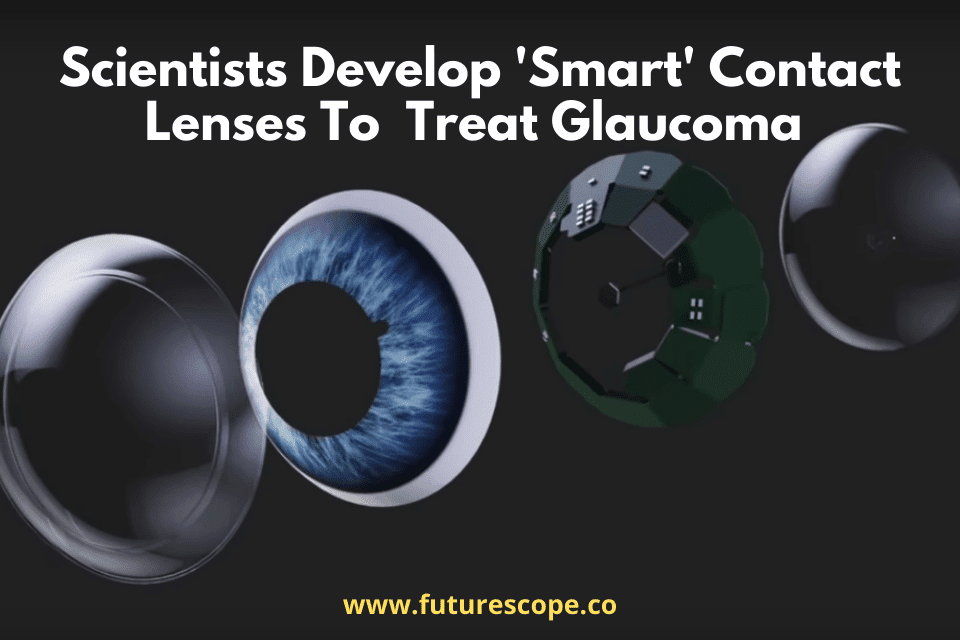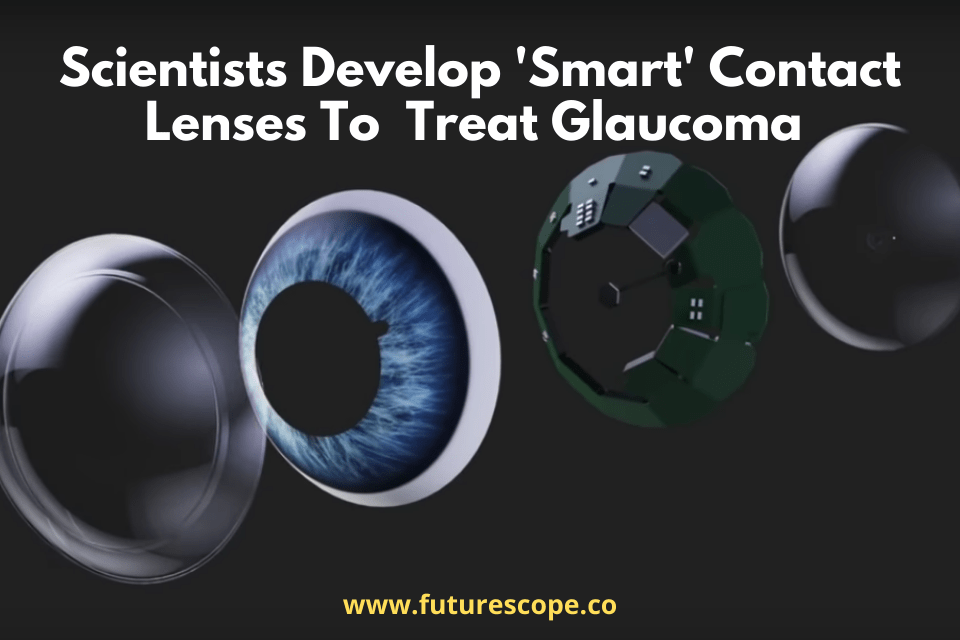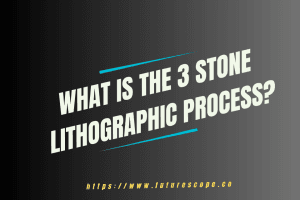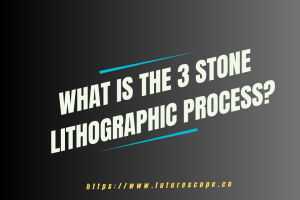Last Updated on May 26, 2022 by Editor Futurescope
A group of ophthalmologists and biomedical engineers in China introduced a smart contact lens that capable to detecting eye pressure fluctuations and discharging small doses of brimonidine, a drug that lowers pressure and can help prevent or delay vision loss in glaucoma patients.
Glaucoma is a disease that affects more than 2.7 million people in the United States — approximately 1.9 percent of the population. It is the second leading cause of blindness in the world after cataract, according to the World Health Organization. However, there are treatments that can prevent its progression.
A new development by a group of ophthalmologists and biomedical engineers in China could be a great addition to the existing ones. He has found a way to help treat this disease with a “smart” contact lens.
‘Smart’ contact lenses could help treat one of the leading causes of blindness, scientists say!
Smart contact lenses could help treat one of the leading causes of blindness, scientists say. By providing a constant stream of medication to the eye, these lenses could prevent the progression of vision loss due to glaucoma.
A new study published in Nature, a new type of contact lens that can detect changes in intraocular pressure (IOP) and release a drug to reduce it, according to Extreme Tech.
Glaucoma is a degenerative eye disease that, if left untreated, can lead to an increase in intraocular pressure. Normally, this pressure should be kept below 21 mm Hg. An increase in pressure above the normal level can damage the optic nerve, leading to progressive loss of peripheral vision and, in some cases, blindness. Unfortunately, many cases are not detected until they are in an advanced state as this disease develops gradually and painlessly for the affected person.

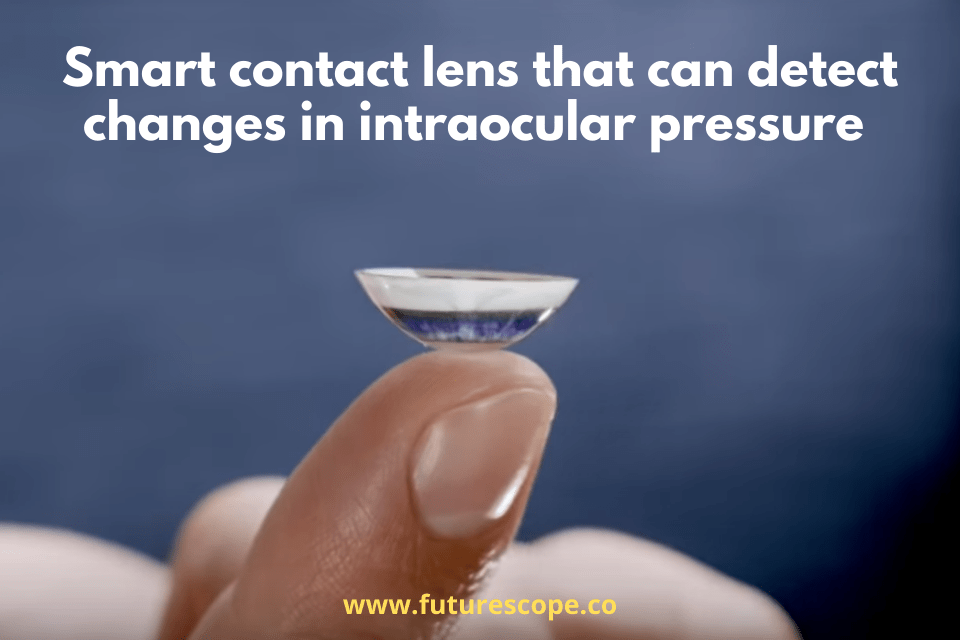
There are various treatments for glaucoma, each with its own advantages and disadvantages. These include eye drops, oral medication, and surgery. Smart contact lens that senses eye pressure and releases a drug on demand could help treat glaucoma, the world’s second leading cause of blindness.
This smart contact lenses for glaucoma capable to detecting fluctuations of eye that occur as a result of an abnormal circulation of the aqueous humor.
A team of Chinese researchers have developed a compact wireless device that appears to effectively detect and reduce increased eye pressure in pigs and rabbits – a common cause of glaucoma.
Glaucoma is a term used to describe a group of eye diseases which cause damage to the optic nerve, resulting in irreversible vision loss and blindness in millions of people around the world.
This new research is gaining ground in the development of a device that capable to detecting changes in eye pressure and delivering therapeutic medications as needed.
Recent efforts to develop high-tech smart contact lenses as wearable devices to treat eye conditions. That focused on detecting pressure changes in the eye or delivering a medication, but not both. Glaucoma treatment typically involves eye drops, laser or surgery to reduce eye pressure.
High-tech smart contact lens could replace eye drops and prevent blindness in glaucoma patients
Although peripheral vision is often the first to go in glaucoma, it can be difficult to detect. The contact lens used to identify the condition only instant measurements of intraocular pressure, which fluctuates with activity and sleep-wake cycles. However, more creative methods can be used to get a more accurate picture of the patient’s condition. The earlier glaucoma is detected, the better the chance of successful treatment.
Researchers said, the therapeutic potential of high tech contact lenses that fit the eye is very attractive. A serious engineering challenge is faced to incorporating electrical circuit and sensors into small, flexible, curved, ultra-thin contact lenses.
This must be sensitive enough to detect pressure changes and deliver precise amounts of drug on demand for it to work without blocking vision or irritating the eye.


It is a great challenge to install an intricate theranostic system composed of multiple modules in a contact lens,” electrical engineer Cheng Yang of Sun Yat-Sen University and colleagues write in their article.
But it seems that Yang and his colleagues have made progress, at least in making a prototype lens that has multiple integrated sensors to prevent potential eye irritation with unique laser-cut snowflake design.
The double-layer lens is coated with the antiglaucoma drug brimonidine, with an ultra-thin air film in between, according to researchers. This film of air hooks into a cantilevered electrical circuit that detects changes in intraocular pressure when the air bag is compressed by external eye pressure.
This film of air hooks into a cantilevered electrical circuit that detects changes in intraocular pressure when the air bag is compressed by external eye pressure. By detecting these changes, the circuit can help protect your eyes from the potentially harmful effects of the air bag deploying.
When eye pressure reaches to high-risk levels, the wireless system triggers the release of brimonidine to help lower the pressure. Pushed by an electronic signals from a smart contact lens, anti-glaucoma drug brimonidine flows from the bottom of the lens through the cornea into the eye.
“The dual-layer lens design allowed for a compact structure to accommodate multiple electronic modules placed in the edge region of the contact lens,” meaning it should not block wearers’ view, Yang and colleagues write.
Summary
Until now, the device has only been tested on live pig and rabbit eyeballs, so more research is needed before the lens can progress to human clinical trials. The team’s current phase of planning also points to the potential usefulness of their work in treating other ophthalmological diseases.
But for now, the researchers say that their high-tech smart contact lenses for glaucoma can quickly detect changes in intralocular pressure and deliver anti-glaucoma drugs via iontophoresis, rapidly lowering eye pressure, just as designed.
In addition, the researchers claim that their manufacturing methods are able to be used on a large scale and cost-effectively, similar to how computer circuit boards are manufactured, even though this device sounds unpleasant, it could be made relatively easily.
We will have to keep an eye on future research & development of smart contact lenses for glaucoma to see what it reveals.
If you enjoyed this article, please share it with your friends and followers on social media.


